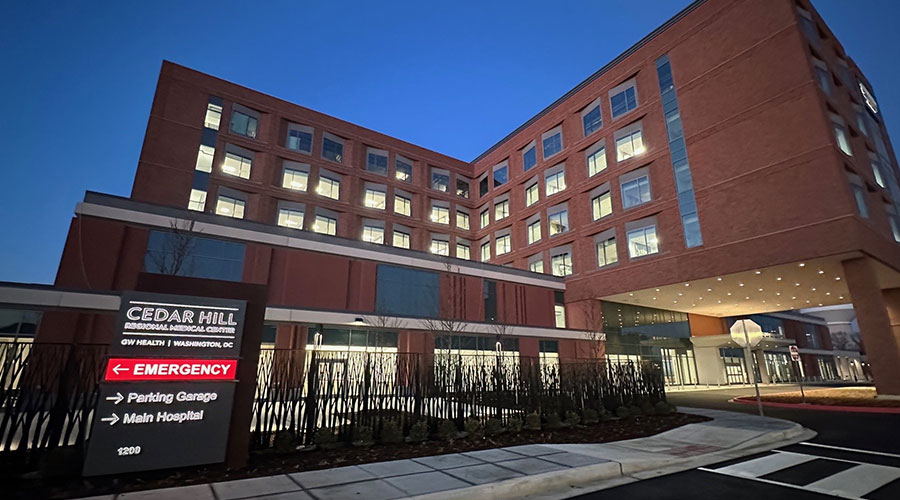Environment of care (EOC) challenges are among the most vexing yet important for healthcare facilities managers, given the complexity of hospitals and other healthcare facilities, the array of interested parties in organizations, and the potential ramifications for failing to comply with applicable standards and regulations. Still, many healthcare organizations continue to struggle with EOC compliance.
“Many of these deficiencies are observed and noted repeatedly, time after time,” says Lisa Hardesty, principal consultant with Joint Commission Resources, who addressed the issue in a session at the ASHE 2022 National Conference in Boston earlier this month. She offered two statistics that emphasized the challenge:
- 70 percent of the top 10 cited Joint Commission standards in 2021 consisted of EOC and life safety deficiencies.
- 90 percent of the top 10 involved compliance issues that are routinely evaluated and often noted during environmental tours.
Hardesty outlined strategies and tactics healthcare facilities managers can use to ensure their organizations implement compliance measures to promote an EOC that features continuous compliance and sustainability with accreditation and regulatory requirements. The EOC includes equipment and utilities, people, and buildings and spaces.
“If there’s one word to sum up my presentation today, it’s ‘culture’,” Hardesty says.
Eyeing objectives
Hardesty says one critical early step in developing an EOC compliance culture is successfully designing the program, which involves:
- knowing the organization’s expectations
- establishing key objectives and accountability
- identifying team and key partners
- defining a reporting and communication structure
- engaging competent staff
- creating a process to collect, use and monitor data
- making continuous improvement a culture.
Another early step in the process for managers, Hardesty says, is identifying objectives in key areas of the hospital’s operations and processes. For example, key safety objectives and considerations include: incident reporting and near misses; safe patient handling; ergonomics; outdoor safety; oxygen cylinder storage; and MRI safety.
Key security objectives and considerations include: infant and pediatrics abductions; workplace violence training; and identifying security-sensitive areas. And key life safety objectives include: fire system inspection, testing and monitoring; fire drills; corridor storage; alarm notification processes; and construction.
People power
Crucial to the success of EOC compliance efforts is identifying and then expanding the team of parties within organizations who can help facilities managers achieve program goals, Hardesty says.
“The biggest mistake I see related to EOC compliance is that managers haven’t identified key people in the hospital who are performing key tasks,” she says. “Make sure they know why you need information from them, and they’ll be more willing to work with you.”
Managers can start the process with five or so critical players, including facilities, biomed, environmental services, safety and security. But expanding the “circle of friends,” as Hardesty calls it, can give the compliance program the breadth and depth required to ensure success.
“The goal is to expand the pool of experts and allies,” she says.
Next, managers need to identify and reach out to a larger group of experts, including infection control and prevention, emergency management, human resources, nursing, risk management, accreditation and licensing, and off-site managers.
Hardesty also reminded healthcare facilities managers that in addition to building a strong EOC compliance network, they need to tap into an important often-overlooked source of facility data — building automation systems.
“Nobody in hospitals knows how to use building automation systems, even though they have so much valuable data on building conditions and operations,” she says, adding that in her experiences in compliance consulting with hospitals, managers too often rely on the BAS vendor when asked to pull together information on the system and the facility.
Dan Hounsell is senior editor for the facilities market. He has more than 25 years of experience covering facility maintenance, engineering and management issues.

 Design Plays a Role in the Future of Healthcare
Design Plays a Role in the Future of Healthcare Cedar Hill Regional Medical Center GW Health Officially Opens
Cedar Hill Regional Medical Center GW Health Officially Opens Designing Healthcare Facilities for Pediatric and Geriatric Populations
Designing Healthcare Facilities for Pediatric and Geriatric Populations Kaiser Permanente Announces New Hospital Tower at Sunnyside Medical Center
Kaiser Permanente Announces New Hospital Tower at Sunnyside Medical Center Building Disaster Resilience Through Collaboration
Building Disaster Resilience Through Collaboration